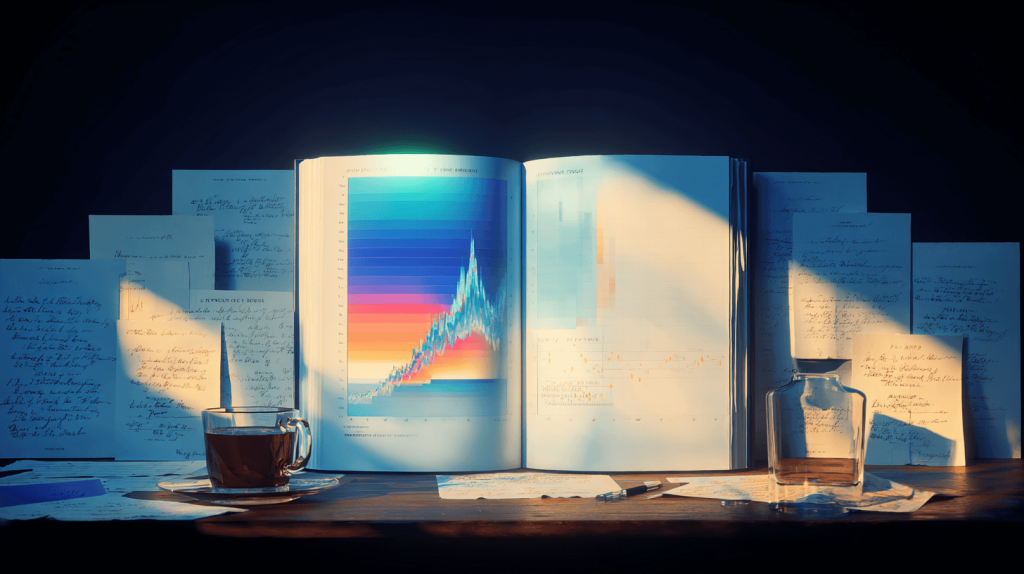Patentability meaning and requirements are essential to understand when seeking patent protection. Are you struggling to understand the complexities of patentability and what makes an invention eligible for patent protection? You’re not alone. Navigating the patenting process can feel overwhelming, especially when trying to determine if your creation meets the necessary patentability criteria.
Here’s the good news: by breaking down these requirements into simple terms, you can confidently assess whether your invention qualifies for a patent.
This article will guide you through the essentials, ensuring you grasp what it takes for an invention to be considered patentable, and helping you secure the protection your invention deserves.
Key Takeaways
- Patentability requires an invention to meet five criteria: patentable subject matter, utility, novelty, non-obviousness, and enablement. Patent law requires that an invention serve a “useful” purpose, emphasizing this requirement particularly in the context of patenting pharmaceuticals or chemical compounds, where demonstrating practical utility is essential.
- Conducting a thorough prior art search is essential for determining an invention’s uniqueness and avoiding potential obstacles before applying for patent protection.
- International patent protection, facilitated by the Patent Cooperation Treaty (PCT), streamlines the process of securing patents across multiple jurisdictions, enhancing legal recognition for inventions.
Patentability Meaning: What Is It And What Are The Requirements?
The eligibility of an invention for patent protection (patentability) is determined by certain conditions it must fulfill to be deemed patentable. This concept of patentability is crucial as it protects the rights associated with intellectual property, thereby motivating inventors by offering them a defense against unauthorized use or duplication of their work.
An invention has to satisfy five key criteria in order to be granted a patent.
- It must constitute patentable subject matter.
- The invention should have utility.
- Its novelty must be established.
- It should not be obvious to someone skilled in the field.
- The inventor must adequately describe how to make and use the invention (enablement).
Prior art references are essential in assessing whether an invention is new and whether it constitutes an obvious improvement over existing technologies.
These standards ensure that only inventions representing genuine advancements and practical applications receive patent protection, aligning with a system designed to reward inventors and stimulate innovation.
Understanding these stipulations is crucial when pursuing a patent, as adherence ensures that an inventor can obtain the exclusive rights granted by an issued patent. By meeting these requirements, innovators can protect their creations while gaining significant competitive advantages in their respective industries.
Subject Matter Eligibility
Subject matter eligible for patent protection is categorized into four primary groups:
- Processes: which are identified as sequences of steps or actions yielding a particular outcome.
- Machines: recognized by their physical structure made up of interrelated parts designed to execute certain tasks.
- Articles of manufacture: indicating tangible items that have been altered in form or properties through manufacturing processes.
- Compositions of matter: representing mixtures or chemical compounds formed from two or more substances.
Certain exclusions exist within patentable subject matter, preventing some inventions from qualifying for patents. These exemptions include abstract ideas, fundamental principles inherent in laws of nature, and natural phenomena. Additionally, inventions lacking a tangible embodiment—such as theoretical concepts or mere pieces of information—do not meet the criteria for patent protection. These distinctions are essential in determining an invention’s eligibility for a patent grant.
Novelty Requirement
The novelty requirement is a cornerstone of patent protection. For an invention to be considered novel, it must be new, meaning it cannot have been known or used by others before the patent application. Novelty requires that the invention has no prior public disclosures. Public disclosure by the inventor can lead to losing the ability to obtain a patent.
The statutory bar for novelty states that an invention must not have been publicly used, sold, or otherwise disclosed in a manner that qualifies as prior art more than one year before the patent application date. An inventor’s prior public use or sale of the invention can prevent them from obtaining a patent if it occurs more than one year before filing. Public disclosures include patents, printed publications, public use, or sales of the invention—regardless of whether they originate from the inventor or a third party—potentially leading to statutory bars.
Prior art encompasses anything that was publicly accessible before the effective filing date of the claimed invention. Under the America Invents Act (AIA), the definition of prior art is globally applicable, meaning it does not need to occur within the U.S. A patent examiner evaluates the uniqueness of a patent application by comparing it with existing prior art.
Utility Requirement
To meet the utility criteria for patent eligibility, an invention is obligated to fulfill a credible, specific and significant role. It’s essential that the purpose of the invention be definitive and substantial in its usefulness while also being believable. It should not appear hypothetical or trivial. The responsibility to prove this utility lies on the shoulders of those who apply for a patent, especially if there are any reservations regarding its proposed value at the patent office.
In terms of application, this means that an invention needs to deliver a distinct and identifiable advantage. This aspect becomes highly relevant in industries such as pharmaceuticals where precise usage is paramount. Those filing for patents must outline a reliable and noteworthy utility within their applications – something which then undergoes review by a patent examiner so they can affirm whether said invention truly has practical worthiness and contributes real benefit.
Nonobviousness Requirement
The concept of non-obviousness is a critical criterion for the eligibility of patents, signifying that an invention should not appear obvious to someone with expertise in the pertinent domain. When evaluating this aspect, a patent examiner scrutinizes earlier patents and disclosed patent applications to ensure that when prior art elements are combined, they don’t lead to an expected result which would indicate the invention’s non-obvious nature.
In determining whether an invention lacks obviousness, the evaluation considers whether, at the time of its creation, it would have been apparent to someone with ordinary skill in the relevant field. An invention may be deemed obvious by an examiner even if prior art does not disclose every aspect of the claimed invention, as long as a combination of prior references or common knowledge in the field suggests its development.
Understanding this requirement is crucial for inventors seeking to determine the distinctive significance of their creations within their industry, as it highlights whether a new and useful improvement has been made.
Conducting a Prior Art Search
Searching for prior art is essential to determine if existing technology may affect the possibility of obtaining a patent for an innovation. If similar technologies have been revealed beforehand, they could obstruct the grant of a patent to an invention. Ascertaining that an invention stands out from what’s already known represents the foundational step in submitting an application for a utility patent.
To thoroughly vet for prior art involves employing pertinent search terms to sift through public databases and references related to patents. Undertaking this process aids in uncovering any pre-existing citations which might lead to a finding of anticipation, thereby bolstering one’s chance at achieving robust patent rights.
Assessing prior art is essential in confirming that no obvious alternatives or similar developments exist concerning a potential patent claim—key factors in evaluating its uniqueness. This process not only helps anticipate and mitigate potential legal challenges but also provides valuable insight into refining and emphasizing the distinctive aspects of an invention when preparing to secure intellectual property protection.
A comprehensive prior art search not only aids in identifying potential obstacles but also provides valuable insights into the competitive landscape within the relevant field. This process can reveal trends in technological advancements and highlight gaps that your invention might fill, offering strategic direction for further development. Additionally, understanding prior art helps in crafting stronger patent claims by clearly defining the novel aspects of the invention, thereby enhancing its defensibility against infringement claims. Engaging with a patent attorney during this phase can provide expert guidance in navigating databases and interpreting search results, ensuring a thorough and effective search process thereby strengthening your invention’s scope of protection.
Preparing a Strong Patent Application
A strong patent application safeguards innovations and requires careful planning and execution. A well-prepared application increases the chances of robust patent protection and helps prevent potential legal challenges in the realm of patent law.
A patent application should include a background, summary of the invention, brief description of the drawings, detailed description, patent claims, and drawings or diagrams. The application begins with an abstract that captures the essence of the invention in no more than 150 words. Inventors should identify their invention’s unique features and create clear descriptions and drawings. The claims define the legal boundaries guarding against infringement.
A prior art search helps inventors understand their field’s landscape, crucial for drafting effective patent applications.
Detailed Description
The invention’s features must be comprehensively detailed in the written description to eliminate any vagueness. By providing an all-encompassing account of the invention, enablement becomes evident to the patent examiner for the purposes of patentability.
Clarifying both the intention and operational capabilities of the invention through a meticulous description aids in streamlining the examination procedure. It is essential to prevent unclear language within patent documents, as this could lead to conflicts or even result in rejection when securing patent protections.
Patent Claims
Patent law mandates that claims must be articulated using language that is both clear and specific, eliminating any ambiguity. This precise wording in the patent claims outlines the exact extent of protection conferred by the patent, establishing distinct borders around the protected area.
It’s crucial for these patent claims to possess clarity and accuracy because they demarcate the legal confines of the granted patent protection. To secure thorough coverage and avoid possible litigation, these assertions need to be corroborated with an exhaustive explanation contained within the submitted application.
Drawings and Diagrams
Drawings and diagrams play a crucial role in clarifying intricate parts of an invention, serving as essential complements to the written description. By offering concrete visuals, they make it easier for others to grasp complex elements of the patent.
In the context of patent applications, these visual aids are instrumental in elucidating complicated features, aiding comprehension and simplifying the process of patent examination. The inclusion of such illustrations can help underpin written descriptions within patents and reduce potential ambiguities.
Role of Patent Attorneys
A patent attorney assists inventors by guiding them through the intricacies of filing for a patent and offers continued assistance, greatly enhancing the likelihood of obtaining a successful outcome. Ensuring open lines of communication with a patent attorney is essential for receiving consistent updates and facilitating an effortless application procedure.
It is vital to choose a skilled patent attorney who possesses both a robust technical expertise and a proven record of success when aiming to secure patent protection. Unlike their counterparts known as “patent agents,” these attorneys are qualified to compose various legal documents such as contracts and non-disclosure agreements.
They possess the authority to act on behalf of clients in judicial proceedings related to patents, providing all-encompassing safeguarding of the inventor’s intellectual property rights.
International Patent Protection
Securing intellectual property rights globally is essential for protecting inventions in multiple countries, made possible by adhering to the provisions of the patent act. By engaging with the Patent Cooperation Treaty (PCT), inventors can submit a solitary international patent application that gains recognition across numerous participating nations.
By leveraging the PCT, applicants are afforded a simplified and effective process when pursuing patents internationally, which in turn fortifies their invention’s protection. This system not only aids applicants but also contributes to a shared pool of technical knowledge from which both they and society at large can benefit.
The PCT framework facilitates cross-border cooperation by standardizing patent processes among its member states. Opting for this route offers inventors considerable savings in terms of cost and reduces procedural complexities as they endeavor to obtain global patent protection.
Common Challenges in Obtaining Patent Protection
Securing patent protection can be fraught with complications, such as:
- Engaging in legal battles
- Weighing the decision between pursuing a patent or keeping an invention as a trade secret
- The difficulty of enforcing patents across different regions
- Differing deadlines for disclosing prior art
There are judicial stipulations that prevent the patenting of certain ideas to avoid giving exclusive rights over basic scientific tools, which could impede innovation.
Patents necessitate a comprehensive application process and provide exclusive usage rights for a set period. Conversely, trade secrets and trademarks offer safeguards without extensive procedural requirements. In instances where it’s challenging to reverse-engineer an invention, maintaining it as a trade secret might offer more robust protection than obtaining a patent.
Understanding these hurdles is crucial for inventors aiming to safeguard their intellectual property effectively.
Alternatives to Patenting
Alternatives to patenting include trade secrets, trademarks, and copyrights, which can also protect intellectual property. Trade secrets safeguard confidential information that provides a competitive edge due to its secrecy. Trade secrets remain protected as long as they are kept secret and reasonable measures are taken.
Trademarks distinguish goods or services of one entity from another, offering legal protection for brand names and logos. Copyrights automatically protect original works once they are created, covering a wide range of creative expressions.
Summary
Grasping the intricacies of patentability is crucial for inventors who aim to shield their creative works. The eligibility of subject matter and the necessity for an invention to be non-obvious are both integral requirements that contribute significantly to obtaining patent protection. Initiating a search for prior art and crafting a comprehensive patent application are key stages in this endeavor.
In navigating the complex terrain of patent law and mastering the steps involved in securing a patent, intellectual property attorneys prove indispensable. Seeking international patent protection can seem daunting, but it offers a unified method for protecting inventions across various territories simultaneously. Inventors also have other options like trade secrets and trademarks at their disposal as alternative methods to safeguard their intellectual creations. By grasping these strategies fully, innovators can ensure robust protection of their ideas while sustaining competitive superiority in their fields.
Work With An Experienced Attorney To Determine The Patentability of Your Invention
Navigating the patenting process can be complex, but you don’t have to do it alone. Our team of experienced patent attorneys is here to guide you every step of the way.
Schedule a free IP strategy call with us to learn how to start the patent process and determine if your invention is patentable.
We’ll help you understand the intricacies of patent law and ensure your innovation receives the protection it deserves. Don’t wait to secure your intellectual property rights; contact us today to get started.
Frequently Asked Questions
What are the 5 requirements for patentability?
The five requirements for patentability are patentable subject matter, utility, novelty, non-obviousness, and enablement.
Meeting all these criteria is essential for obtaining a patent.
What does patentably mean?
Patentably means that an invention meets the legal requirements necessary to qualify for a patent and can therefore be patented. This term indicates an invention’s ability to be legally recognized and protected through a patent.
What constitutes prior art in the context of patent law?
In patent law, prior art encompasses all information that has been made publicly accessible before the effective filing date of a patent application. This includes existing patents, printed materials, and any public demonstration or sale of the invention.
Such an inclusive understanding guarantees that inventions which are comparable are not granted patents redundantly.
How does the Patent Cooperation Treaty (PCT) benefit inventors?
The Patent Cooperation Treaty (PCT) benefits inventors by enabling them to file one international patent application that is acknowledged in multiple countries, thereby simplifying the patent process and lowering costs.
This streamlined approach significantly reduces the administrative burden associated with securing patent protection in various jurisdictions.
What role do patent attorneys play in the patenting process?
Patent lawyers play a pivotal role in the patenting process by steering applicants through submission procedures, composing comprehensive patent applications, handling correspondence with the USPTO, and safeguarding patent rights during conflicts.
The proficiency of these attorneys greatly improves both the effectiveness and probability of success in securing patents.




